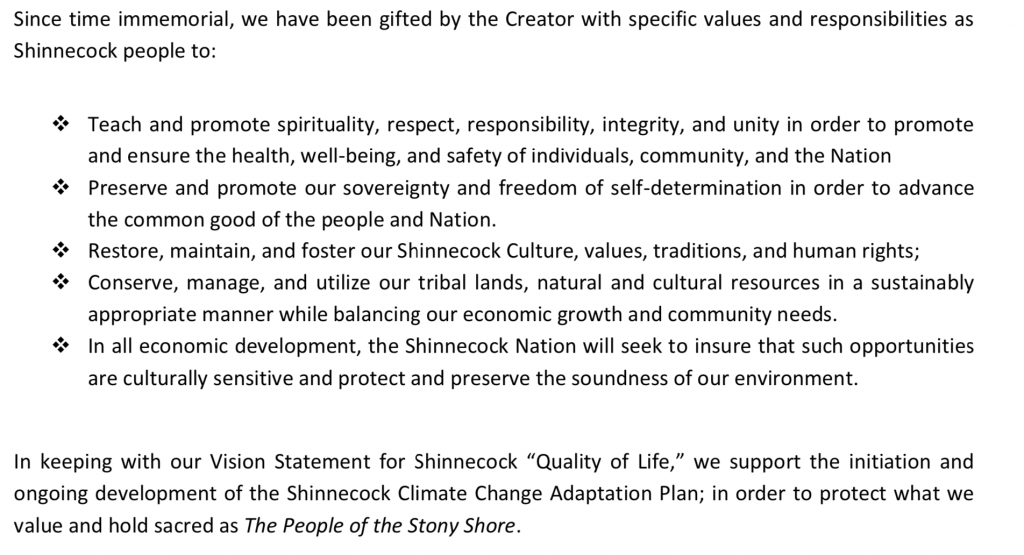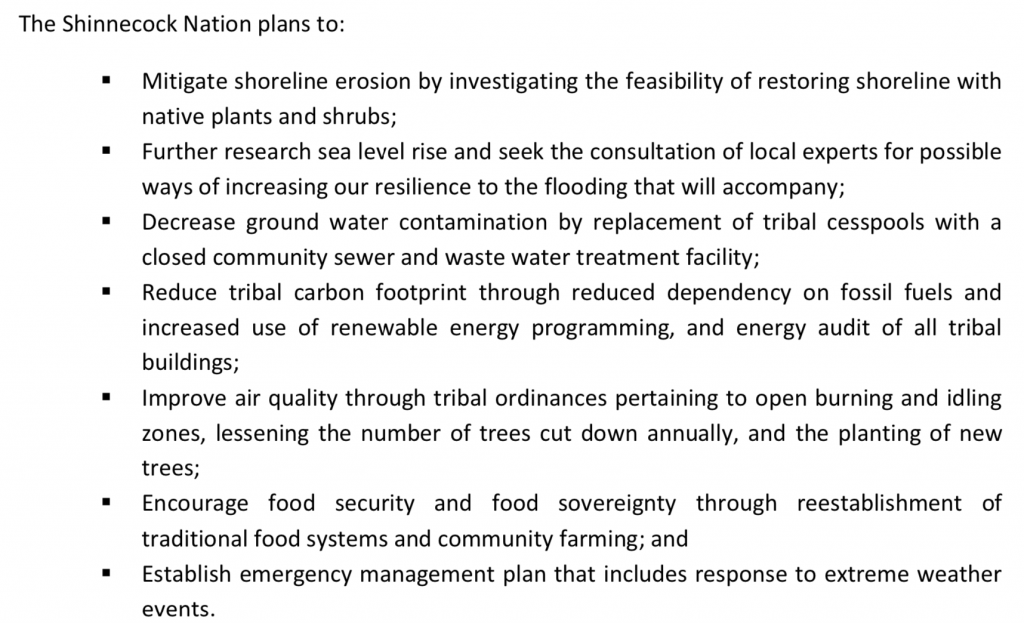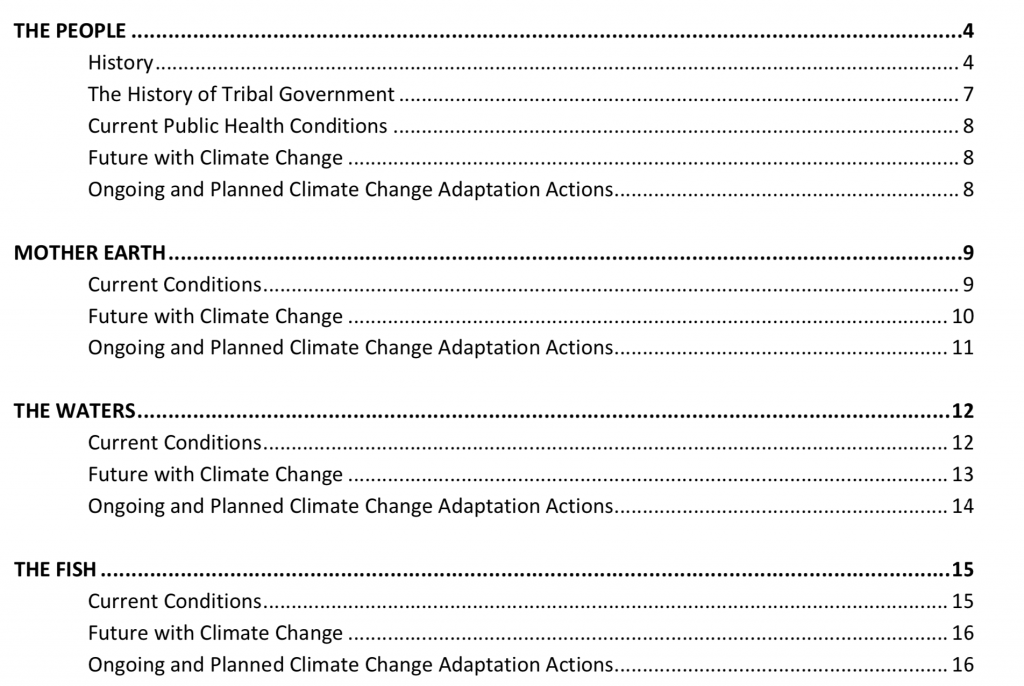Before creating our blogs and podcasts, students reviewed the climate action plans for tribes and nations most closely related to the peoples and places for which they speak of. Doing so is not just an educational exercise. Taking the time to learn from and understand the issues and solutions proposed by indigenous peoples for themselves and their neighbors is an act of respect. In Indigenous Environmental Activism, we seek to learn from Indigenous activists as a way of critiquing and improving upon mainstream environmentalism.
Often these plans were found using the University of Oregon’s Tribal Climate Change Guide
For the region in which Vassar College resides, the Shinnecock Indian Nation and the Akwesasne St. Regis Mohawk have climate plans posted to the Oregon list.
The Shinnecock Plan, dated 2013, contains the following commitment and action list.
The Akwesasne plan is very different in its organization, linking each aspect of the environment to the cultural history and traditions that govern the people’s relationships to it.
These two examples show that non-Indigenous communities have so much to learn from tribes and nations. Both of these plans are dated 2013. Has your community developed their own plan? Or is mainstream environmentalism always looking for something or someone else to save the planet?


